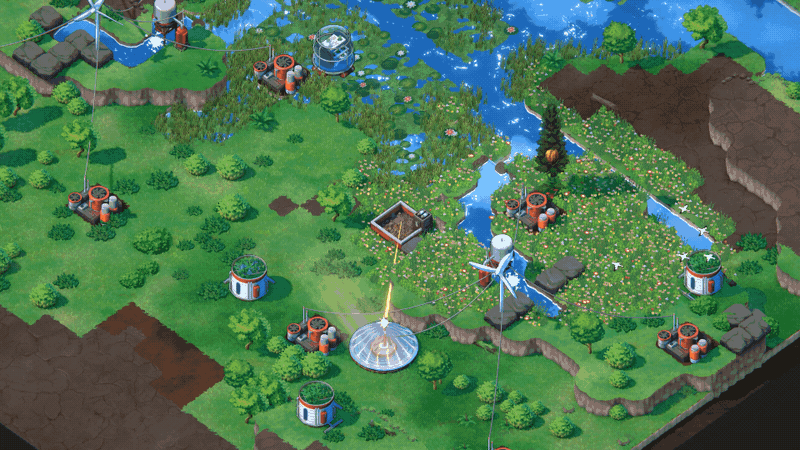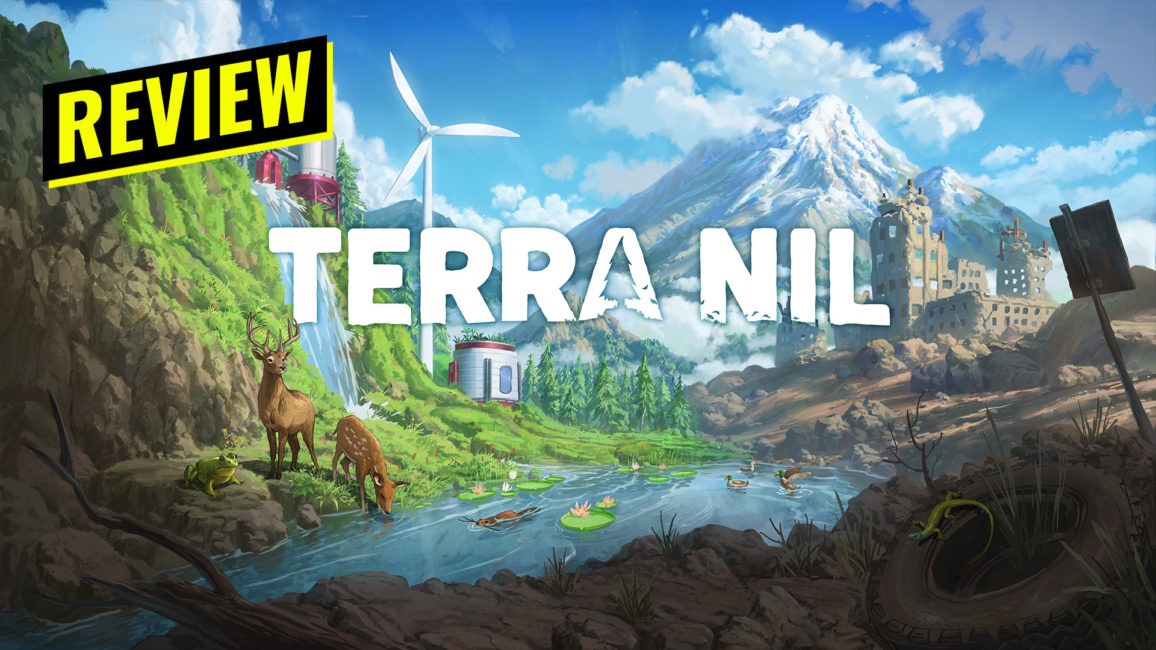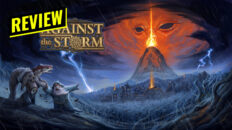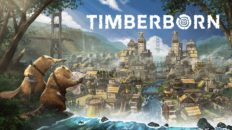Developer: Free Lives
Publisher: Devolver Digital
Reviewed on: PC
Code Received.
Terra Nil bills itself as a chill way to learn about resuscitating a dead world back to life. It certainly looks the part with beautiful meadows flowing out of futuristic terraforming machinery, and animals peacefully poking around their new habitats. In practice the game ends up being a tedious chore of trial and error that feels more wasteful than finding yourself a new planet. It’s in its methodical application of strategy game mechanics that Terra Nil fails, as it leaves no room for nature to take its course.
Each new region in Terra Nil is a landscape of grey wasteland with some topographical features like cliffs, and maybe some polluted water. Your first task is to place wind turbines to generate electricity to power the magical devices that cleans the wasteland. Each device has a small area of effect, so you must be strategic with where you place them. At first you may try to be stringent on how many you use as to not be wasteful, but in practice you will be placing way more than initially seems efficient. The problem is that everything is Terra Nil has such a small radius of influence. Soon your wasteland will, indeed, be covered in green, but also tons of reclamation apparatus. The final stage of every level is to tear down all the stuff you built, but that process can require even more buildings and terraforming which also seems wasteful.
Between each building’s limited area of effect and final requirements around collecting your buildings, you never get that “feel good” moment of nurturing a habitat back to life. It’s very mechanical with no wiggle room for what nature is all about: self-sustainability. If I place a grass seeder, but can’t quite make it fill in one small square, that square should naturally fill in over time because that’s how grass works. Instead it will stay empty as a nagging reminder of my imperfect placement. Or maybe I want to place a beehive. First I must place an arbitrary number of grass seeders in order to “unlock” the beehive. Or worse yet, maybe you have to drop in a giant laser to slice a riverbed through a beautiful forest just so you can deconstruct an in-land apparatus, and hit that magical 100% completion. It’s all in service of artificial game mechanics instead of natural processes.

You also have to create perfectly balanced biomes in order to get fauna to return. This is also a matter of trial and error, with no indication of what their requirements will be prior to plopping down a meadow or wetland. In fact you don’t even know what the animals are until you “scan” a region and hope it uncovers a frog or parrot. On top of that, the feedback the game gives you about what a certain animal needs is vague. Animals adapt in the real world, they make the best of the environments around them and, in many situations, make short comings into long-term sustainability. Beavers build dams to make lakes and ponds, squirrels bury nuts that grow into trees, and bees pollinate flowers. But they don’t need pristine and perfect environments to get started. A beaver can’t survive in a desert, but it also doesn’t need exactly 10 squares of wetlands plus 5 squares of trees, and 3 squares of river.
It’s in Terra Nil’s tendency to require mathematical precision that it fails to be fun, never mind a teaching tool for environmental restoration. The game doesn’t expressly say you’re repairing an Earth damaged by human exploitation like deforestation, burning of fossil fuels, or maybe even nuclear war, but the through-line is there. Unfortunately, the theory behind these restoration methods and in-game execution misses the critical understanding that nature will find a way. Giving it some help can speed things up, but forcing it conform to your ideals feels like planting artificial turf.









